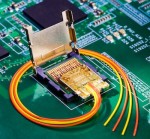This regular series features highlights from the week. The big news for me was Wednesday’s announcement of Tech Field Day 5 in February, though others might have been paying attention to Dell’s acquisition of Compellent. I also continued my series on Light Peak by musing about combining Light Peak and USB 3.0 and pondering, what if Light Peak was electrical rather than optical?
Light Peak
Back From the Pile: Interesting Links, December 10, 2010
This week I started getting to know a whole bunch of wireless geeks in preparation for Wireless Field Day in March. I also wrote about Light Peak, my search for an AirPrint-compatible printer, and some more on the iPad. On the enterprise IT side, I covered Application Performance Monitoring (with a special offer from SolarWinds) and Dell’s potential acquisition of Compellent.
What If Light Peak Was Electrical Rather Than Optical?
As I considered the possibilities of the new Apple/Intel interconnect technology known as Light Peak, an odd parallel with 10 Gb Ethernet popped into my head. Much of the confusion around Light Peak revolves around connectors, power conduction, and backward-compatibility. Then, like the Grinch, I thought of something I hadn’t before: Why use optical at all? 10 GBASE-T does just fine over twisted pair, and short interconnect distances would reduce power draw to reasonable levels. What if Light Peak was electrical rather than optical?
Light Peak + USB 3.0 = Awesome!
Yesterday I talked about Light Peak, the new optical interconnect being developed by Apple, Intel, and others. Today I’m continuing that theme, suggesting a possible productization that would really take Light Peak to the next level: Integrating it with USB 3.0.
Is Everyone Wrong About Light Peak?
Light Peak isn’t anything yet; it doesn’t exist. But I don’t think Light Peak will become the USB 3.0-killer that many folks suggest. Light Peak is a cabling spec only, not a new protocol that will eliminate everything that currently exists. In other words, Light Peak is a “middle connection” between a computer and peripherals that will retain compatibility with USB, HDMI/DVI, and Ethernet.


